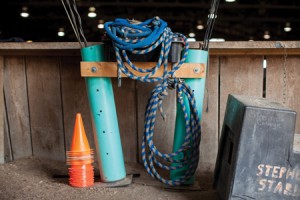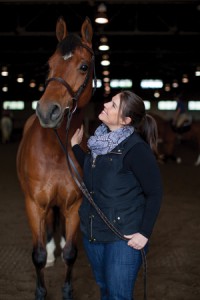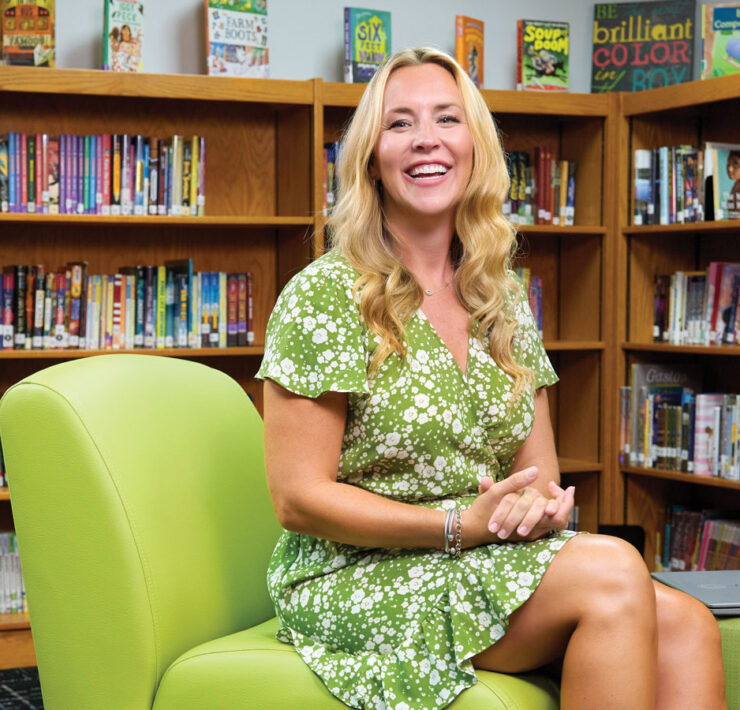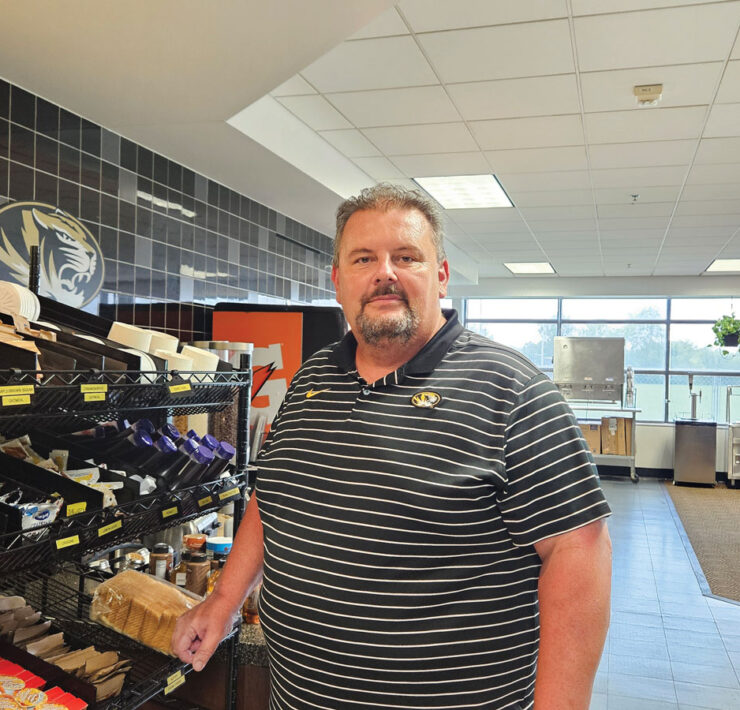A Day in the Life: Hunter/Jumper Instructor
Not long after Sara Linde Patel could talk, she was already begging for riding lessons. By the time she was 7 ½ years old, she finally got the chance. Sara, now a hunter/jumper instructor and interim program coordinator at Stephens College, wasted no time winning awards and loving horses. By age 12, she had her own horse in her hometown of Little Rock, Arkansas. When the time came for college, her father reminded her, “You know you can major in horses, right?” After an extensive search, Stephens College became the obvious choice. In a turn of fate perhaps, she later returned to teach at the college she once attended. Sara, 35, is prepared to advance the equine program at her alma mater even further.
But how does she do it? 
5:30 to 6 a.m. Rise and shine: Her “children herd,” or her three dogs, need to be fed. Because the Stephens stables crew arrives at 5 a.m., Sara is always prepared for an early morning call. She always considers herself on call because she works with living, breathing animals.
7 a.m. Eventful mornings: Sara prepares to take her dog to the vet on the way to the stables. She suddenly gets a call from one of her crew: a horse, Teddy, is acting strangely. He keeps coughing and sneezing. Sara thinks he’s choking. “Sometimes you think the day should be over, but it’s only been an hour,” she says. “No one day is the same.”
7:15 a.m. Arrive at the stables: Sara checks the vitals of the horse. Then she gives the horse an IV sedative to calm him until the vet arrives.
7:45 a.m. Vet arrives: Sara uses this opportunity as a teaching moment for some of her students as the vet tubes the horse, locates and removes the lodged food and accesses Teddy. All is well again at the stables.
8 a.m. Professor Sara: She now has lectures with her students. In addition to being a riding instructor for students and the community, she teaches students valuable lessons about the horses and womanhood.
9 a.m. The revolving door: A student has a great ride, but Sara notices the student’s horse seems off. Moments later after having a “life chat” with the young woman, Sara learns the student recently failed a test in another class. “Sometimes the horse tells you more than people are willing to,” she says.
10 a.m. The revolving door continues: A student walks into Sara’s office with one final question about horsemanship for an exam. After the question, Sara administers an exam to her group of students. She then continues looking through piles of possible interns for the summer.
11 a.m. One on one: For the next two hours, Sara teaches student after student during riding lessons. She calls her horses her “living, breathing classrooms” and teaches the young women to put the horses’ well-being first at all times.
 1 p.m. Odds and ends: Sara’s day technically ends at 1 p.m., but in some ways it’s only beginning. As a program coordinator, she attends meetings to plan community events and the future of the equine program. “Community service is key in keeping this program alive,” she says. “We have to reach out and show people all the horses have to offer us.”
1 p.m. Odds and ends: Sara’s day technically ends at 1 p.m., but in some ways it’s only beginning. As a program coordinator, she attends meetings to plan community events and the future of the equine program. “Community service is key in keeping this program alive,” she says. “We have to reach out and show people all the horses have to offer us.”
4 p.m. Catering to the masses: Large events, such as an FFA judging clinic, take up some of her evenings. She heads to the University of Missouri to give awards to FFA members after events such as this.
7 p.m. A student herself: Beyond leading the equine program, Sara is a student herself. She doesn’t take the term leader lightly. She is working on her master’s in strategic leadership from Stephens.
At the end of the day, Sara says her success is completely intertwined with her horses. “I am only as good as my four-legged friends,” she says. “They really help heal your soul, and we have to give it right






